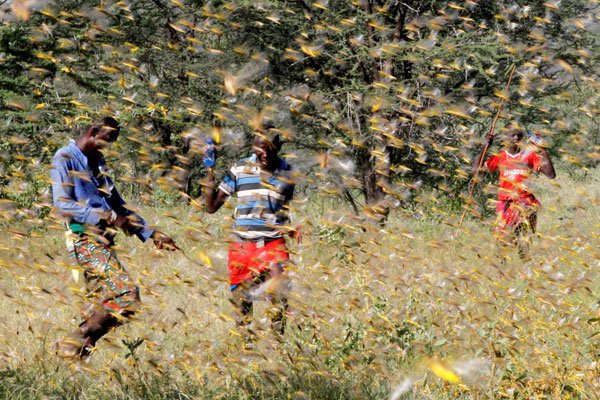
FAO gets $18m more to fight desert locusts

The United Nations Food and Agriculture Organisation has in the past fortnight received some $18 million to fund the fight against the desert locust invasion currently devastating the region. This brings the total amount of donations to $40 million over the past couple of months.
FAO had appealed for $76 million, needed by March, to fully control the locust invasion. However, the UN agency said it will still take almost $138 million for rapid response and anticipatory action in eight countries on the continent
While addressing donors in New York, FAO director-general Qu Dongyu warned that the locust invasion could trigger a humanitarian crisis. He said FAO had so far received around $22 million of the $76 million requested to assist the five countries initially impacted. But he expected needs to increase amid concern that the outbreak will continue to spread to other countries.
“It is clear that already vulnerable populations could easily be pushed into a major humanitarian crisis unless we act fast to protect their livelihoods,” a FAO circular quoted Mr Qu.
On Monday, the Bill & Melinda Gates Foundation committed $10 million.
“The foundation’s support is intended to help FAO and national governments confront the critical need for rapid control of the infestation, including aerial control of large swarms,” said a press release by the Foundation.
Earlier, the Unites States Agency for International Development (USAid) announced that it would provide $8 million to be used in efforts in Kenya, Ethiopia and Somalia — the countries most affected.
FAO said it had already mobilised $3 million from its own resources to step up control operations. This is on top of some $10 million it reported as having been released by the UN Central Emergency Response Fund to support a rapid scale-up of control operations in January, aimed at containing the spread of Desert Locust swarms in East Africa.
But efforts to spray some more than 100,000 hectares of land in the region, have seemingly fallen short of containing the problem thus far as experts report new hatchlings — pink in colour, across the region. The older insects are yellow.
“The laid eggs have now begun to hatch in parts of the country and this will continue for some time,” said Mehari Tesfayohannes of the Desert Locust Control Organisation for Eastern Africa in a phone interview on Thursday. “Eggs will continue to hatch intermittently all through to April.”






